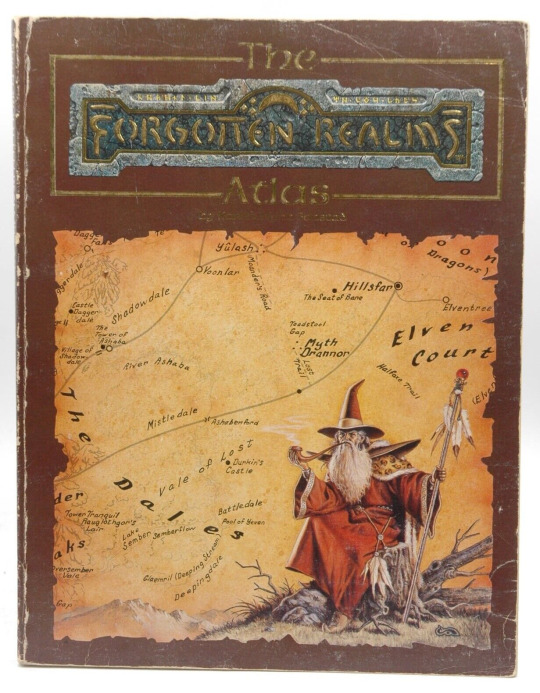#dnd 4e
Text
Yeah this isn't part of the tournament this is just for my sake. IMPROMPTU BATTLE FOR MOST SEXY ORC
5e Gray

5e PC

5e Claw of Luthic

4e

3e

2e

1e

189 notes
·
View notes
Text
Why Is Druid?
Say that like ‘where is Wizard Hut?‘
I love the 4e Druid. This is a marked change from how much I liked the 3e druid, or how often you might see me playing a druid in a Baldur’s Gate game. Back in 3rd edition, the druid, despite being very powerful, never really engaged me, in part perhaps because I was always trying to find something exploitative and powerful rather than merely accepting the juggernaut of a toolkit the game just left in the Player’s Handbook. You couldn’t get clever with the Druid, you just had to pick it up and use it, like some sort of society of creative anachronisms where one of the anachronisms available to the players was has gun. Valid, but hardly sporting.
The Druid in 4th edition is different. Wildly different. Weirdly different, and different in one of those ways that shows what I think of as a seam in the design between 4th and 3rd editions of D&D.
The Druid was one of 3rd edition’s great mistakes, a full spellcasting class with healer capacity to serve as a pinch-hitter healer in a group that wanted things a little more varied, addressing an enormously complex potential build from its earlier edition, 2e, and all in the process, resulting in some deeply confused mash up of abilities that attempted to address confusion with volume. The druid of 2e had a special unique set of rules compared to the Cleric — for example, at a certain level, you passed into a specific category of Druidic ability and now you were technically a Hierophant, and Hierophants had seven extra spells of every level. Of course there was a limited supply of Hierophants in the world, so there was a question of if you could level up if another one existed, and maybe there’s a one-in, one-out policy? First in, first fired?
Anyway, I can’t speak to how it played, but I am at least aware, on the edges of it, that the 2e druid was odd. It had a lot of things it could do, but much of how it worked, reading the books, seemed to be interesting but challenging to manage. You could wild shape, you could heal, you could cast utility spells, you could even fight with some melee weapons — personally, I didn’t see any of it worth it, because none of the things it could do it could do very well.
3e addressed this seeming difficulty by instead taking all those different options and bringing them all up to the same level. Wild Shape worked by checking traits of monster units, which meant that you weren’t limited to specific reinterpretations of animals and instead could do what a druid feels like it should do — you know, turn into an animal. The spells were rebalanced and shared across different classes, which meant that they tended to work in a more standardised way. Armour rules were aggregated, and weapons were made less terrible.
The result was that the 3e druid went from being ‘decent’ at a bunch of things to ‘good’ at everything it wanted to do. The problem of the druid then became about picking the thing you wanted to at every opportunity, and doing a good job of it — you’d have druids carrying wands of healing so they could dedicate their spell slots to more important tasks, like Flame Striking opponents, or messing up the battlefield with roots. You’d also see druids keeping the ‘best’ list of animals on hand, and every new monster book presented a new chance for druids to develop a new best form.
It also created the strange question of What does the druid do?
The answer was ‘everything.’
The 4e Druid, in comparison and contrast to these designs is something very different that touches, at best, on the periphery of what the 3e Druid could be. I mean it stands to reason, you can only ever touch on doing everything when something you’re working from is so powerful. 4e with its role system of Defender, Striker, Leader and Controller, and its reliable, reusable balance math suddenly was confronted with fitting an elephant into a shoebox.
How do you represent something busted that could do everything in the context of a new system that sought to explicitly prevent that? I joked when the game was new that the four roles were Defender, Striker, Leader and Miscellaneous. That any class too powerful, with too much stuff it could potentially do, got thrown to the Controller role as suggested by the first Controller we ever saw being the Wizard. Oh and back in Player’s Handbook 1, the Wizard had a few builds that were pretty ridiculously pushed — the pinball wizard, I’ll talk about it sometime — and that meant that it was easy to feel like the Controller Does Everything.
That impression diluted through experience, of course, and eventually it came to that while yes, the Controller sure has some Miscellaneous vibes, the core of what the Controller was there to do was to attack the enemy action economy. Nice and obvious to a non giga-nerd, right? Okay, how about this: The leader lets you do more things, the controller stops them from doing more things?
And into this space, they poured the druid.
It works beautifully, for my tastes; the druid needs to do lots of things to feel properly druidy, but you need to make sure the doing lots of things doesn’t unbalance the game. Controllers have the widest variety of things they can do and ways they can do them – inflicting status conditions, changing enemy position, preventing specific action types, making areas on the battlefield inaccessible, these are all ‘controllery’ things, and that means there’s a lot of different ways you can flavour them. The Invoker is most famous for making zones in the play space hard to deal with, the Wizard has a build that slides things all over the place, and the psion controls people with immense penalties to their damage rolls.
Obligatory pause where, while reading this aloud, for either Fox or I to comment on how amazing it is that Dishearten is an AOE power.
Anyway, the druid was designed to be a mode switcher class. That is, there are two ways a druid can do things. One is a melee controller that makes a single target’s life harder, the other is a ranged controller that makes a large group of enemies’ lives harder. This mode switching then adds a new element to the class that your powers can interact with, where you now have control powers that can add a mode switching element to them as well. This is your Wild Shape – you transform into some kind of nonspecific beast, which can use your Wild Shape powers. Each form has fewer powers to manage, and you can build your druid to specialise in one or the other or do a mix.
This lets the druid do the ‘a lot’ without letting them actually do everything. You have a lot of choices and a lot of ways to play with those pieces, but even just how often you use the mode switch is part of what the druid does to control the battlefield. When I first played a druid, it was not uncommon to start a fight out of wild shape, use the first turn to make some kind of area control power, then shift into wild shape for the rest of the fight kicking people into that area control power. There are druids builds that work like wizards and only ever shapeshift to get away from problems, and make a hit while scuttling away, or to sit on a specific type of problem. There were druids who focused on summoning monsters and using them as kind of turrets on the battlefield, positioning allies in a way that benefitted them around those summons.
Lone artillery combat encounters, where you have a bunch of stuff in front of a long-ranged attacker? Druids love those. Even at level 1, that artillery is spending their days completely stuck underneath a Fire Hawk power.
Problem is, of course, that if you want to do Everything doing a Lot is going to miss something. That was what led to the subclasses of the druid, the ones that added healer elements to the druid, because the druid back in 3e could do that. It added animal companions, because the druid back in 3e could do that. Now I don’t worry too much about these things because if I wanted an animal companion on my Druid, I’d take a theme for that, but also because these changes were introduced in an Essentials book.
Which is to say, they’re crap.
They’re not crap crap, like I try to defend Essentials as giving players a choice for simplified character builds, but in the specific case of the Essentials Druids, in order to work with the simplified choices, these Essentials druids with their animal companions and their healing powers have to look at all other Druid powers and not use them. The only use they get out of their animal companion is using the specific subset of powers that make them work, and that makes combat more samey. But again: That’s a thing you probably want if you want a simplified build.
Still, it gives rise to my favourite joke – I mean like, funny thing, not really a joke, there’s no subversion of reality or anything here – about the Healer Druid. See, every Leader in the game gets an encounter power, usable twice a combat at level 1, that heals an ally with a bonus. Every class gets their own version that lets them distinguish their class specifically and add some interesting detail that shows how this Leader differs from other Leaders.
The Healer druid build gets Healing Word.
The Cleric power.
Literally, the same power, same name, listed as a Cleric power.
Check it out on PRESS.exe to see it with images and links!
90 notes
·
View notes
Text
Wow so this new dnd edition already has:
-A terrible VTT with video game monetization.
-People switching to pathfinder.
-Rules changes meant to fix the old system that just make it worse.
-OGL drama.
Can't wait for dnd 4.5th edition.
34 notes
·
View notes
Text

interpritation of ioun's symbol
17 notes
·
View notes
Text



Today's repostober is of Cameron, my half-elf invoker (4e) who I made into an NPC for Waterdeep Dragon Heist and gave him the Blackstaff position. He's eternally tired. He lost his ability to speak from that injury as a child but has a voice box made. His deity magic manifests as gregorian chanting if he opens his mouth, so he can't do that very often or at least not very much.
#dungeons and dragons#dnd#dnd character#dnd 4e#dnd invoker#waterdeep dragon heist#waterdeep blackstaff#blackstaff academy#ttrpg#repostober#cameron#my art
10 notes
·
View notes
Text
i ain't never met an asexual who doesn't play dnd
184 notes
·
View notes
Text

Made a Ranger for the 4e game I'm in.
53 notes
·
View notes
Text
i've been learning how to play a lot of other TTRPGs recently, including some older editions of D&D. something stuck out to me in 4E a lot and it got me thinking about something i've felt for a long time in 5E:
saving throws suck.
they're confusing for new players and really inconsistent (why does the attacker roll sometimes but not all time? why do i make rolls when i do some things, but then my opponent rolls when i do other things?)
add that on top of the fact that save or suck effects are too risky to use. burning hands will always be better than charm person because charm person completely fails if the target succeeds on its save (AND ONLY AFFECTS ONE TARGET). both of those spells cost a 1st-level spell slot!!!! one of them is clearly riskier to use, and it's also the one that's less violent (and 5Eheads wonder why people say the game is about combat). burning hands deals damage, even if targets succeed on their saves, and affects a technically unlimited number of targets. why would i use hold person when i can just pelt them with damage spells that have no chance of failure?
(((specifically, save or suck effects are too risky because if it fails, you just wasted your Action and whatever class resource you expended)))
the cool thing about 4E, though, is that it just. doesn't have saving throws. (there's still a type of roll called a saving throw but it works differently and you don't add any modifiers to it)
in 4E, the attacker always rolls. nearly every offense you could wage against someone in 4E is considered an "attack," even if it's not going to cause injury (like charm person). each creature has four Defenses instead of Ability Saving Throws: Armour Class, Fortitude, Reflex, and Will
when a dragonborn uses their Dragon Breath, they make an attack vs Reflex. when a wizard casts hold person, they make an attack vs Will. when a fighter swings a sword, they make an attack vs AC. (and so on)
sometimes, an attack still does something on a miss, so you don't necessarily waste your turn just cause you rolled bad
in my own game, i think i'm gonna take that philosophy and run with it. the person performing the action is always the person who rolls
4 notes
·
View notes
Text




Repostober of my longest played DnD character, Adelaide. She’s grown a lot over the years.
#repostober#repostober 2023#hops art#hops ttrpg#hops ocs#dnd#dnd 4e#dnd art#dnd character#dnd eladrin#ttrpg#ttrpg art#ttrpg character#original character#original character art#Adelaide Voclain#Galaydon Sommerset#Liatris Psamathe#yes those are the two men who are vying for Adelaide’s affection.
8 notes
·
View notes
Text
Made some of the NPCs in my DND game and now that's your problem
First up is the Evil Lich from the Long And Boring Backstory, The Black Hand. He was super eeeeeeeevil, but was slain twenty years before the campaign started

Next up is Father Malphos, former high priest of Orcus and current big bad guy. He's currently running a criminal gang/cult in the poorer parts of the city.

Speaking of which, the party's erstwhile ally and sorta-kinda patron, city councilwoman Kilian Darkwater (two references in one!) As the only non-human on the council, Councilor Darkwater struggles to meet the needs of her poor constituents. This plus her time in the Army of Light has convinced her of the necessity of hiring adventurers to cut through red tape.

Her only friend on the council is Lord Alden Foxglove. Please don't ask about the Black Hand memorabilia or the dead kenku in his spare bedroom.

And finally Cassilda, (aka the Lady in the Bottle), the subject of a Maguffin Hunt for the past several weeks. What does she know, and why did both the local crime lords want to know it? Find out tomorrow, on Heroes of Haven!

3 notes
·
View notes
Text
If you're curious about 4e and you like slime people, consider: The Ozu
Hey, if you've shown up here with interest in 4th edition D&D, well, we're still making new content for it. In this case we're making a new culture of playable slime people! Please! Come! Look at them! Validate our efforts and appreciate the effort that I didn't push to call one of their passive abilities 'byoing'!
BONUS: You can knock them prone!
Slime People Link Here!
27 notes
·
View notes
Text
Level Up Your Combat Encounters with These 3 Resources
You can’t always prepare for those boosts in power the players get at higher levels or with magic items. So for that, I turn to the following resources to provide lair actions, bloodied actions, and legendary actions for CRs of all types.
We can all agree that as 5e characters level up it can become more difficult to challenge them to combat. There are many dials that the base 5e game provides that can help provide a variety of difficulty for the players. You can adjust the number of enemies, the number of attacks, the amount of HP they have, and many other options.
However, sometimes you can’t always prepare for those boosts in…

View On WordPress
#1#5e#bloodied condition#challenge rating#colos guide to monsters#dnd#dnd 4e#dnd combat#dnd combat encounter#dnd monster#dnd5e#dungeon master#dungeons and dragons#eberon#eberron#eberron: rising from the last war#game master#lair actions#legendary actions#monster manual#ttrpg
3 notes
·
View notes
Text
Introduction to the Forgotten Realms Atlas
Greetings!
Around the beginning of March, 2022, I was picking my way through the files of the Trove when I stumbled across a treasure most impressive. Buried amidst an archive of Dragon magazines and a program to teach you the rules of AD&D 2e, was this:

So, like any self-respecting adventurer who had just come across a treasure chest, I did not check for mimics, and immediately opened it up (after speaking with a few of the Installation Wizards).

Behold, what I found inside that chest!
Now, I want to preface my findings with a few important details about myself. For years now, I have had a special fascination with the Forgotten Realms, call it inexplicable, call it what you will, but something has endlessly pulled me into this world. First, my interests were focused primarily on Drow: their culture, society, and lore. But soon, my exploration through the pages of the Forgotten Realms Wiki (for purposes personal and game related) broadened my horizons, you could say.
And curiosity begets curiosity begets a lust for knowledge.
As it turns out, the planet that the well-known Faerûn is situated on, Toril, has remarkably few canon maps that show it in full, at least not easily accessible from a cursory image search. There are a number of maps of more well-known areas, primarily within Faerûn, as it is the most well-established continent in the canon. Some are beautifully rendered in high resolution, such as the 5th edition map of the Sword Coast, released in 2015 by Wizards of the Coast (art by the WotC Extra Life Team, for download here)

This map is beautiful. I have a 54x36″ print of it hanging on the wall of my room. The detail is stunning, even if nearly half of it is covered in water. The issue is, this map only includes a fraction of Faerûn, and nothing of other continents of this world. This is the best map that 5e offers players in the Forgotten Realms in terms of sheer magnitude of places to be explored. But here we are, seven years out from it’s creation and release, without a world map.
So, I went to other editions, because the plethora of lore that is held in those books is astounding, and makes me wish that I had entered into this field of study far earlier in my life, or perhaps, that I was born just a little earlier, so I could have appreciated them at the time they were released.
The 4th edition map of Faerûn has a few key things that need to be noted before you look at it too deeply. As many know, 4e was the edition that introduced the Spellplague to the Forgotten Realms setting. I will make no moral judgements of this event in this entry, but I will point out the things that it changed in the world, the majority of which were undone by the Second Sundering and the ushering in of 5e.

This map, as you can see, features a much larger area, including just about all the land that makes up the continent of Faerûn. However, I must point out what many scholars of the realms already know.
1) The art on this map is... well it’s poopy. I don’t want to be rude, but the dreary color palette does it no service, and the Underchasm is a large brown stain that draws your eyes to it. I’ll let you do with that what you will.
2)The problem with Chult.
Since I am traveling backwards in time to reach my destination, I feel here is where I must skip around a wee bit. You see, Chult is a location that has been featured through numerous iterations of the Forgotten Realms, appearing in books as far back as the very first Forgotten Realms Campaign setting (1987). It has jungles and dinosaurs, and its own set of critiques and criticisms that I will surely dive into another time.
The short of it is, Chult was originally a peninsula, meaning that it was a land mass that went out to sea, but was still attached via land to the mainland of the continent. With the events of the Spellplague, it was made into an island, and then returned to being a peninsula. For reference, we can use the next map on our journey, the 3rd edition map of Faerûn.

It may not have the details and aesthetic of the 5e map, but thankfully, it also does not have the unpleasant skid mark of the Underchasm that the 4e map so graciously provides us.
And, most importantly, it shows us how Chult was, and how it presumably returns to post-Second Sundering.

I’ll go into detail regarding this another day, but needless to say, the 4e map is... sub-par for our purposes.
And so, in our time machine, we make it to the year 1999, when the Forgotten Realms Interactive Atlas comes to Forgotten Realms Enthusiasts about to brave the new millennium.

A thrilling piece of software, this. After three major updates, it came to contain over 800 maps of the Forgotten Realms, including cities, streets, and even building interiors. All of them accessible in such a way that they could be exported and printed to be used at the table. But, the most impressive part by far, was the globe.

I dare not post a gif of it in motion as it sometimes even gives me a headache, but rendered in stunning 2D, was a globe that you could click and drag to move. But it was more than that! By using the zoom tool, clicking an area would bring you to a “child” map of the area you wished to see in detail. On more fleshed-out areas of Toril, this means you can go as far as to a single city street in Waterdeep, following the chain of parent-child maps.
Google Earth’s initial release was not until July of 2001, nearly two years later. This must have been a massive undertaking for the artists and programmers involved, and it fills me with joy.
But there’s more?!

There are 28 different options that can be toggled for you to view, from contours to waterways, political boarders to structures to vegetation.
And, the glory of it all, I find a canon map of Toril.
I am jumping around once more, but technically, we were given a map of Toril in 3rd edition. However, it looked like this:

Meanwhile, the Forgotten Realms Interactive Atlas provides us with this:

(Pardon the quality, I screenshot-ed the original program from 1999, and it’s chunky at best)
But the art and resolution aside, this is stunning! This is everything at a scale and level of detail that tells us much more than the 3e outlines ever could. AND you can choose areas to zoom in on.
The only downside is, we do not see the same level of detail on many of the continents that we do for Faerûn. This is supposed to represent how, in Faerûn, they actually do not know much about these places, and have not mapped them out yet. Also, I am sure that not including those details made this project feasible in the first place, and I respect that. It was 1999, computers could not handle the things they do now, and certainly not at a price that an amateur hobbyist could purchase and use, considering the audience was mostly school-aged kids and teens to my understanding.
So, you might be asking, what does this all mean?
Well, not long after this discovery, I came across a book in a game store, carefully wrapped in plastic to preserve it.

Published in 1990.
As of writing, I have yet to unpack the contents of this atlas, but I want to do it in a way that is meaningful, and can also provide a reference to others. This blog will be dedicated to my research and ramblings on everything that I find.
So, welcome adventurers! It’s time we set off on our journey!
#Forgotten Realms#dungeons and dragons#meta analysis#faerun#faerûn#maps#D&D#dnd#ttrpg#map making#forgotten realms atlas#ed greenwood#dnd 2e#dnd 3e#dnd 4e#dnd 5e#fantasy#introduction post
18 notes
·
View notes
Text
So, remember when I asked for opinions about my backup dnd character, Anansi? It worked out perfectly because, not only did I realize that the one other bard character I had made for a campaign that fell through didn't have a theme and scholar fit her background perfectly, but I also had forgotten that the prescient bard build exists. So now, Anansi has abilities like Glimpse the Future, Clarvoyance, and Cast Fortune from both parts of his build, and I am thrilled!
Now I just need to convince the DM to let me use Cast Fortune and Glimpse the Future together.... 😆 (one allows me to pick an ally and roll 3d20s and they replace their next three d20 rolls that character makes for saves, attacks, and skill checks, and the other let's me roll 3d20s and pick the highest one and use it at any point during the encounter to change an ally's roll... so if I am allowed, I could "foresee" someone crit failing and then change the future to a more desirable outcome)
6 notes
·
View notes
Text
I’m super excited cause I’m currently running a game using my ttrpg Im making once a week, and I’m starting another game this week playing D&D 4th edition. Now I know 4e isn’t the most popular system, but I really love heavy mechanical systems with tons of options, so I’m really excited to play it for the first time! I ran it once as a GM but I’ve never played it before. On the ttrpg I made. The first session went very well and everyone seemed to enjoy it! I took lots of notes during the session and during character creation so I know what stuff to clean up, fix, elaborate on, or reformat/reorganize. The base rules and mechanics of the system are mostly just done, I’m basically making more player options and enemies, while also trying to make everything more streamlined and easy to understand. Seeing the things people miss also helps me to see where I need to put more redundancy,
#ttrpg#indie#indie ttrpg#dnd 4e#d&d 4e#I’m doing enemies the way dnd does#instead of just like…#making a system to make enemies#yes I know this is the worst way to do it#I’m a dumb dumb#I’ll probably also make a system for it#but later. I don’t feel like it rn
4 notes
·
View notes
Text
D&D thought: One thing that D&D 4th edition did that I actually really liked was reskin the aasimar as the Devas, the forever reincarnating, good-aligned planetouched/outsiders. I liked that they could draw upon or be haunted by their previous lives.
The aasimar are one of my favorite D&D heritages/races/species, but they tend to come across as rather bland compared to the fan-favorite tieflings. So the Devas, while abandoned as a concept, are a nice attempt to make the aasimar a little cooler.
4 notes
·
View notes